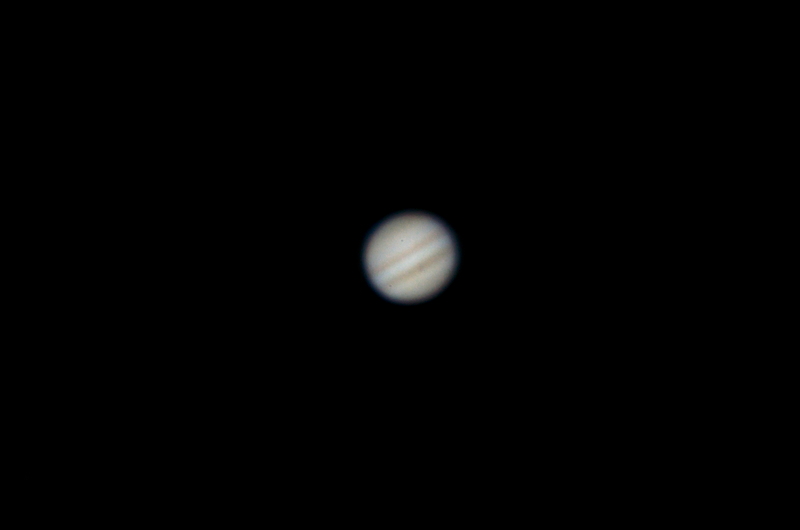
Moon, Jupiter with Io Shadow
Posted: 29 December 2011
I opened the observatory Wednesday, 28 December, at 1807 MST, 57°F. At 1811 MST, viewed the moon at 77X and 206X. The "Rimae Petavius" rille on the floor of the Crater Petavius really stood out this night. I switched to the Visual Back and did some imaging of the moon with the D7000 DSLR at prime focus:

I took this iPhone 4 photo showing the moon on the camera "Live View" screen, the telescope illuminated by a red flashlight, and the crescent moon in the sky:

I attached the OPT Camera Adapter for eyepiece projection using a 9mm (222X) eyepiece. I did a series of exposures of the Crater Petavius at various shutter speeds and ISO settings. The best was this one using the "Hat Trick" method, ISO 400:

The rille, central peak, and some details in the crater wall are clearly visible.
At 1900 MST, I returned to lunar observing at 354X, 206X, and 133X. Seeing was not perfect, but there were still some nice views. I noticed a bright star near the Earthlit side of the moon that might experience a grazing occultation. I began monitoring it. After observing the moon's motion towards the star for a few minutes, at 1919 MST, I determined that a graze would not occur, but a full occultation would happen. I continued to monitor the star. It "winked out" at approximately 1931 MST.
At 1934 MST, slewed to Jupiter and with 133X could see three moons off to one side of the planet and a moon shadow in transit. The shadow was from the moon Io, that was also in transit. I began trying to see Io against the planet's disk. I added a moon filter to reduce glare but could not see the moon at 354X, 206X, or 133X. I then set up for imaging of Jupiter. I captured this single frame, full-frame, image of Jupiter showing Io's shadow in the South Equatorial Belt, "Hat Trick", ISO 500, using eyepiece projection (222X) with the D7000 DSLR:

I continued my D7000 DSLR HD video recording tests of Jupiter using eyepiece projection (222X) but again, the exposures were too underexposed. I will continue my tests on a future session.
At 2004 MST, I resumed observing Jupiter. At 133X with the moon filter, Io in transit was clearly visible approaching third contact. Limb darkening really helped make the moon visible as a "bright star" against the planet's disk. I continued observing as the transit of Io ended.
Closed the observatory at 2025 MST, 50°F.
Go to the previous report.
Return to the Cassiopeia Observatory Welcome Page.